Transport is one of NZ’s biggest opportunities when it comes to cutting carbon pollution. Today, we rely almost entirely on oil to move people and stuff around the country. Together, all those cars, vans, trucks, motorbikes, airplanes, trains and ships cause around 40% of our total CO2 emissions. But change is afoot, and there are a range of exciting solutions to move us towards zero carbon transport.
In previous blog posts I introduced the Net Zero in New Zealand report by Vivid Economics and gave an overview of its future scenarios. In this post, I dive into the transport sector and look at what those scenarios involve, and whether we could go further.
IMAGINING ZERO CARBON TRANSPORT
What might a zero carbon transport system look like? Here’s one possible vision.
In our cities and large towns, people drive less and rely more on bikes, walking and public transport to get around, making these nicer places to be. Enhanced digital connectivity reduces the need for travel – especially for air travel and long-distance trips. A shift towards a more ‘weightless’ economy, alongside increased use of rail and coastal shipping, reduces growth in road freight. As battery costs continue to fall, electric vehicles take over the market for cars, vans and smaller trucks – running on close to 100% renewable electricity. The remaining non-electric vehicles are much more efficient, and run mainly on biofuels produced locally from wood and waste.
That’s just one vision, and there are many possible variations – for example around the extent of behaviour change and the kinds of technologies that dominate. We could describe any future scenario in terms of three key factors:
Demand reduction: How demand for travel might change and how we can reduce it.
Efficiency: Shifting to more efficient modes of transport and improving the efficiency of vehicles and systems.
Fuel switching: Changing from fossil fuels to low- or zero-carbon fuels like electricity, hydrogen and biofuels.
VIVID’S SCENARIOS
What do Vivid’s scenarios look like for transport? I’ve put together the infographic below. This lays out the scenarios’ assumptions for 2050 and what this would mean for carbon emissions.
(Note that Vivid’s Off Track NZ and Resourceful NZ scenarios have identical assumptions for the transport sector, so I have only shown the latter.)
In a nutshell, Vivid’s scenarios all envisage a future where behavioural and systemic changes are limited, but technologies improve and electric vehicles (EVs) take over.
This EV takeover is more than plausible based on current trends. From 2008 to 2015, battery costs fell by 75% while their energy density increased more than four-fold (enabling longer vehicle range). A recent report from global financial firm UBS forecasts that EVs could reach the same total ownership cost as combustion engine cars as early as next year; a potential tipping point for mainstream uptake. Heavy vehicles are more challenging but we’re seeing positive developments there too, such as Waste Management NZ beginning to transition its fleet of 800 rubbish trucks to electric.
Considering the rapidly declining costs alongside the substantial public benefits (particularly the health gains from more active transport and cleaner air, and reduced dependence on oil imports), these scenarios could be a net positive for New Zealand before we even consider the carbon reductions. The Innovative NZ scenario pushes the boundaries further with its higher electrification of freight vehicles and greater shift to rail freight. These are a bit speculative and we need more analysis on the feasibility and potential costs.
As shown, the carbon emissions reductions range from 55% in the Resourceful NZ scenario to 71% in Innovative NZ, compared with 2014. Due to the rapid growth in transport emissions since 1990 though, the reductions are less impressive off a 1990 baseline. Even in Innovative NZ, the transport sector would only just exceed its share of meeting the government’s current target of reducing emissions 50% below 1990 levels by 2050.
Virtually all of the emissions reductions come from the light vehicle fleet, which is almost completely decarbonised in Innovative NZ. In fact, total emissions from the rest of the transport sector still grow in Resourceful NZ, and only reduce slightly in Innovative NZ (you can see this by clicking on ‘Light vehicles’ in the graph legend).
I’ve included the emissions from electricity generation allocated based on transport’s share of the total electricity demand. This shows the important interaction between electrifying transport and reducing coal and gas generation. Although transport electricity use is higher in Innovative NZ, the electricity grid is nearly three times cleaner and very close to zero carbon.
ELECTRIC REVOLUTION
EV’s made up just 0.5% of new light vehicle registrations in NZ in 2016. This market share was behind the global share of 0.86%, and way behind leading countries like the Netherlands and Norway, where it was close to 30%. However, it’s growing fast. So far this year, EV registrations are three times higher than in 2016. We’re well on track for the Government’s goal of doubling EVs each year to reach 64,000 by 2021, which will require market share to grow to around 10% by that year.
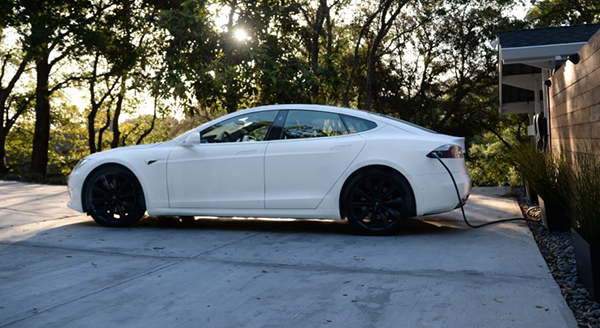
To realise Vivid’s scenarios we would need that growth to continue, and for virtually all new cars to be electric by 2030. This is based on a continuation of current trends in NZ where the average light vehicle lasts around 19 years before being scrapped, and most travel is done by newer vehicles. It’s ambitious, but the rapid cost reductions described above make it entirely plausible. In fact, India’s energy minister recently unveiled plans aiming to achieve exactly that.
ARE WE IN FOR DISRUPTION?
The elephant in the room here is self-driving vehicles, and their potential to disrupt and profoundly transform our current transport model.
A provocative new report from US think-tank RethinkX boldly predicts that buying a petrol or diesel car will be a thing of the past within eight years, and by 2030 virtually all personal travel will be in self-driving EVs offering “transport-as-a-service”. Their logic is that through the combination of very cheap vehicle running costs, higher utilisation, and no driver to pay, self-driving electric taxi fleets will soon significantly undercut the cost of driving your own car. In other words, even if you already own a car, it will be cheaper to leave it at home and hail a self-driving EV on your phone instead.
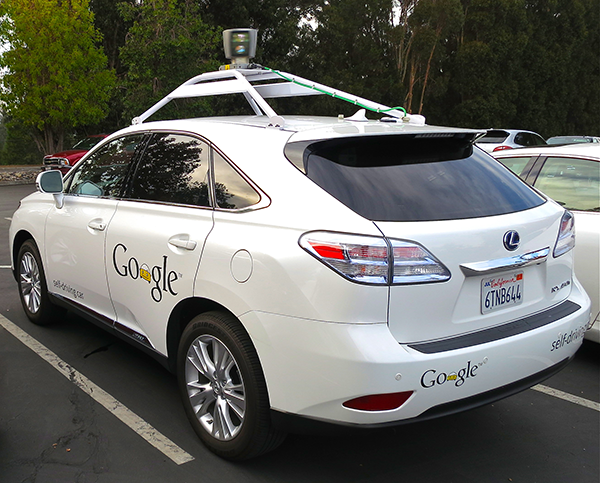
It wouldn’t just be cars. The same dynamics would drive big cost reductions in travel by bus (and potentially train), which will still make most sense in larger centres due to space constraints. The report also argues that self-driving trucks will penetrate the freight sector – at least for short-haul freight.
It’s a compelling vision – and one that will have oil industry execs trembling in their boots. But there are myriad issues and risks that society needs to grapple with, which will surely delay ReThinkX’s bullish, techno-utopian predictions. Nonetheless, it’s a question of when, not if, and the potential for near-100% electric passenger transport well before 2050 is very real.
At a less speculative level, electric car sharing schemes are becoming commonplace overseas and beginning to appear in New Zealand (e.g. Mevo in Wellington). These use a subscription-based model where you can book a car on-demand via your smartphone. These will accelerate the transition to EVs because each shared vehicle can effectively replace many individually-owned ones (around 9 to 13 based on US experience).
GOING FURTHER
Putting aside the potential for radical disruption, some of Vivid’s assumptions are conservative in my view, and there is certainly potential to go further.
A 10% reduction in light vehicle travel per person by 2050 is quite modest for starters. For comparison, this fell 7.5% from 2004 to 2012, before growing again in subsequent years. The Ministry of Transport has published scenarios with much larger reductions in vehicle travel. While bigger reductions would make little difference to emissions by 2050 in Innovative NZ (because almost all light vehicles are running on very clean electricity), this could deliver further meaningful cuts in Resourceful NZ. But we also need to think about reducing emissions over the whole time period – not just in 2050. Furthermore, reducing unnecessary vehicle travel has economic and social benefits (like reduced congestion, health gains and more liveable cities).
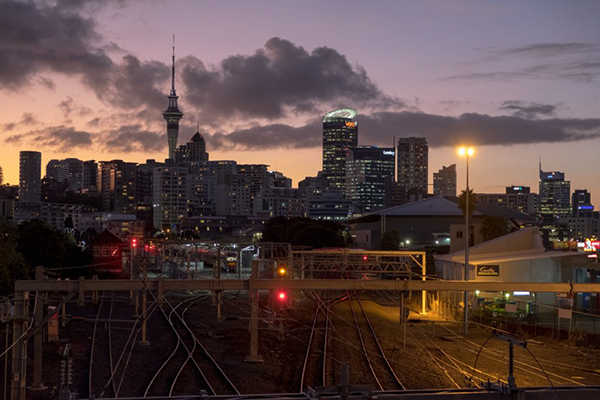
As we’ve already seen, freight and air travel are the tougher nuts to crack, so it’s the assumptions there that have a bigger impact on emissions in 2050.
Vivid assumed a high rate of freight demand growth to be cautious (they weren’t able to directly model freight demand for their scenarios). A shift towards a more weightless, digital economy could reduce this. However, some changes could work the other way – for example, the big increase in plantation forestry in the scenarios will increase demand for moving logs.
The assumed efficiency improvements in road and rail freight are quite meagre, and this is a clear area where we can and must push harder. The scenarios assume annual efficiency improvements of 0.3-0.4% (before factoring in uptake of electric trucks). However,
from 1990 to 2008 we saw efficiency improvement rates of around 1% for road freight and 3% for rail, in the absence of any meaningful climate policies. Gains can come not only from more efficient vehicles but also, perhaps more significantly, from more efficient operations and logistics (e.g. avoiding running half-empty trucks). Collaboration and systems-thinking are key ingredients, along with technology progress (e.g. hybrid engines and smarter ICT systems). The Sustainable Business Council has set up a Freight Efficiency Group who are doing good work on this.
Domestic air travel has been a remarkable success story to date, with emissions lower than in 1990 despite passenger numbers more than doubling. Vivid assumes both the passenger growth and efficiency trends continue out to 2050. But in a future of increased concern about emissions and significantly higher carbon prices, will growth in air travel continue as it has? Improvements in ‘telepresence’ technologies could also play a vital role in reducing demand – especially for business travel – leading to further emissions cuts.

What about electric trains? Vivid assumed the same level of electrification in 2050 as today. Late last year Kiwirail announced plans to replace its current electric freight trains with diesels – a major step backwards that will increase emissions. Vivid assumed further electrification of the rail network was high cost, but that was largely based on Kiwirail’s statements, which have since been called into question. We really need an independent assessment of long-term costs and benefits of further electrifying the rail network, as our surest prospect for zero carbon long-distance freight.
Electric boats are another real possibility. Norway is home to the world’s first all-electric car ferry (capable of carrying 120 cars and 360 passengers) and has ambitious plans to transition to electric and diesel-hybrid ferries. As technology improves, we could see this becoming a viable option for the Cook Strait ferries and potentially other shipping. Electric airplanes are a bit more far-fetched, but concepts are garnering interest from major companies like EasyJet and Boeing.
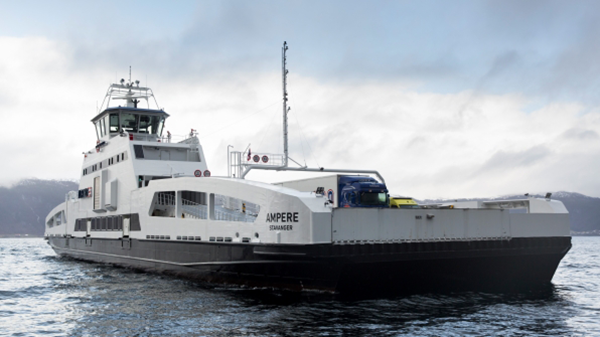
Lastly, what about alternative fuels like biofuels and hydrogen – can these provide a solution where electricity doesn’t? Vivid ruled both out on the grounds they will be too expensive and will be outcompeted by electricity.
Part of the cost challenge is infrastructure. Hydrogen in particular requires electrolysis plants to produce it, pipelines or tankers to distribute it, and storage and pumping equipment. Rolling this out nationwide won’t stack up if EVs take over the light vehicle fleet. But targeted applications – e.g. along primary long-distance freight routes, with the hydrogen produced from renewable energy on-site – could be a viable solution. One company in the US has ambitious plans to make this model work.

Wood-based biofuels have been seen as a big opportunity for NZ, but Vivid came out skeptical of the economic case. One challenge is that – perhaps counterintuitively – the success of EVs globally will lead to lower oil prices, making it harder for biofuels to compete (unless compensated by higher carbon prices). Another is that there are competing uses for the wood (including using wood waste for industrial heat). However, given the potential role in tackling difficult areas like air travel, we need continued R&D into wood-based biofuels.
Finally, while the potential scale is small, biofuels from other waste streams can make a contribution at low cost. Z Energy is soon to open its plant in Wiri producing biodiesel from tallow, which could be scaled up to produce 40 million litres per year – about 4% of current heavy vehicle diesel demand. Every bit counts.
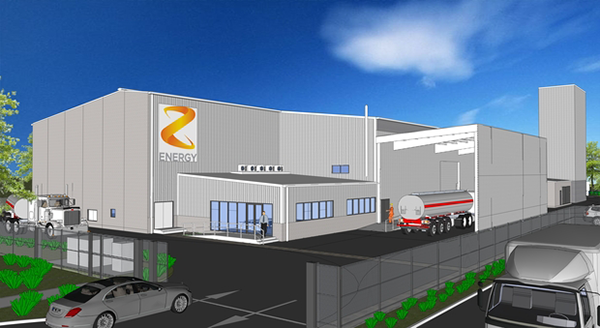
TAKEAWAYS
With electric vehicles on the rise, complete decarbonisation of passenger transport by mid-century is well within reach. However, we can’t afford to be complacent, and efforts to reduce car dependence and accelerate electric vehicle uptake remain very important. The bigger long-term challenge, though, is in freight and air travel. Under Vivid’s scenarios for 2050, these sectors are still causing similar carbon emissions as they are today – but there are opportunities to go further. This highlights the need for us to look beyond just technology change to behavioural and systemic change – as well as achieving stronger efficiency gains and uptake of new technologies.



Leave a comment